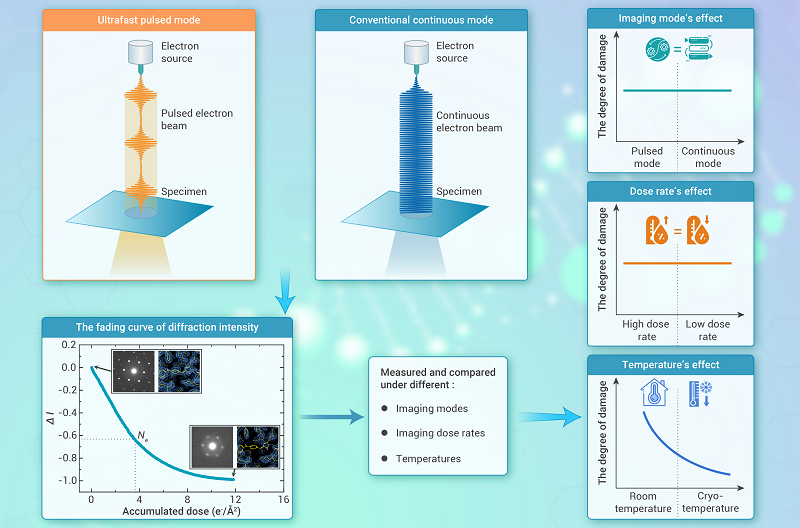Ultrafast Cryo-EM Study Challenges Assumptions on Pulsed Electron Beam Mitigation of Radiation Damage
Radiation damage remains the central barrier to achieving higher resolution in cryo-electron microscopy (Cryo-EM), despite advances in cryoprotection and low-dose imaging. Some researchers have proposed that using pulsed electron beams could allow relaxation between energy deposition events, potentially reducing damage. However, the actual existence of such a mitigation effect remains unclear.
On July 2, 2025 - A collaborative team from the Institute of Biophysics and the Institute of Physics of the Chinese Academy of Sciences has constructed a cutting-edge ultrafast cryo-electron microscopy (cryo-UEM) system to experimentally test whether time-modulated pulsed electron beams can mitigate radiation damage in soft matter samples-a longstanding controversy in the cryo-EM community.
Their findings, published in The Innovation Life, challenge prior assumptions and suggest that pulsed imaging offers no substantial advantage over conventional continuous-beam modes in reducing electron-induced damage.
The researchers, utilizing a 200 kV biological cryogenic ultrafast electron microscopy (cryo-UEM) system equipped with a pulsed electron imaging mode, investigated the effects of pulsed electron imaging on electron radiation damage in biological organic samples.
For the first time, they obtained complete diffraction-intensity fading curves and corresponding critical electron dose values (Ne) for saturated aliphatic hydrocarbon samples (C44H90) under various imaging modes and conditions.
Through both longitudinal comparisons (e.g., varying temperature) and lateral comparisons (e.g., pulsed vs. continuous modes) across different experimental conditions, the study clearly revealed that there is no correlation between electron radiation damage and imaging electron dose rate.
Lowering the temperature effectively alleviates radiation damage to the sample. However, the extent of damage in pulsed imaging mode was found to be the same as in continuous mode.
This study demonstrates that time-modulated pulsed electron beams do not mitigate the radiation damage sustained by samples, and ultrafast pulsed electron imaging does not appear to be a viable solution for addressing the radiation damage problem in cryo-EM.
These findings provide new insights and experimental evidence for understanding sample radiation damage under electron beams, offering guidance and inspiration for elucidating the fundamental principles underlying radiation damage.

Figure. Schematic diagram of electron radiation damage detection in saturated aliphatic hydrocarbon C44H90 crystals
(Image by SUN Fei's group)
Article link: https://doi.org/10.59717/j.xinn-life.2025.100145
Contact: SUN Fei
Institute of Biophysics, Chinese Academy of Sciences
Beijing 100101, China
E-mail: feisun@ibp.ac.cn
(Reported by Prof. SUN Fei's group)

